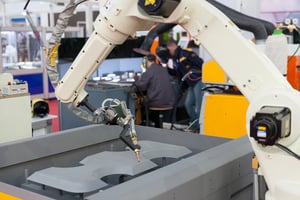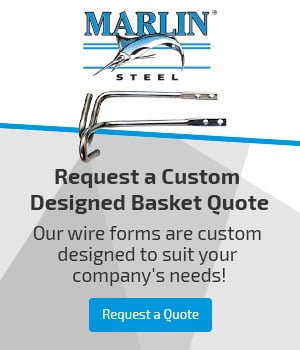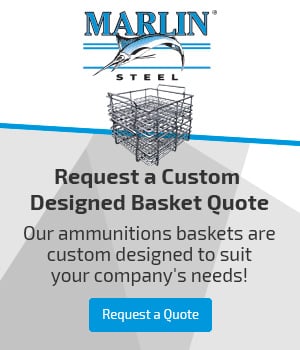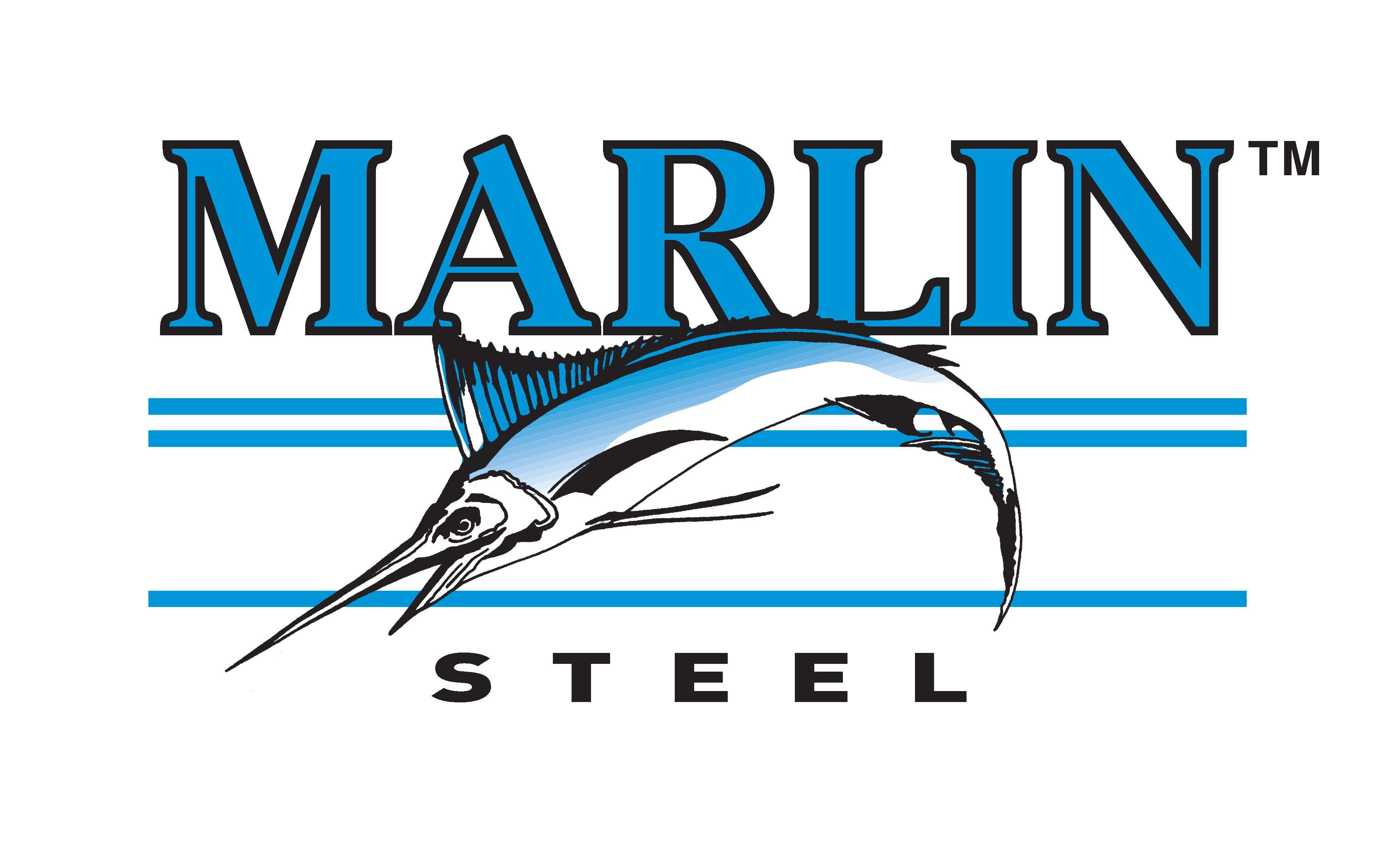 One of the biggest challenges in automating a manufacturing process is dealing with the various limitations of a given machine. Yes, machines can repeat a specific task with impressive speed, and without getting tired or suffering repetitive motion stress injuries like a human laborer would. However, most machines aren’t nearly as adaptable as a human worker.
One of the biggest challenges in automating a manufacturing process is dealing with the various limitations of a given machine. Yes, machines can repeat a specific task with impressive speed, and without getting tired or suffering repetitive motion stress injuries like a human laborer would. However, most machines aren’t nearly as adaptable as a human worker.
In one recent custom parts washing wire basket order, the client expressed a need for a basket that could ensure that the held parts would stay in a precise orientation and layout. A variance in placement or orientation of just 0.02 millimeters would keep the robotic arm the client was using from being able to pick up the parts in the basket as intended.
This is because the robot was not fitted with any kind of adaptive capability—it didn’t have any cameras or pressure sensors to track part locations and orientation—the robot could only grab parts based on their programmed locations. So, for this job in particular, every last dimension of the basket had to meet extremely tight tolerances. If the outside dimensions of the basket, or the placement of any of the part-holding inserts, was off by a millimeter, it could keep the robotic armature from being able to pick up the parts the basket holds.
The mechanism for moving the basket involved a hinged doorway with solid blocks attached. When closed, the blocks on the doorway would push against the basket, forcing it into place against the guide rails and hard stops in the robotic armature’s loading zone. Because of this, both the external and internal dimensions of the basket had to meet precise tolerances.
Other Requirements for the Basket
Aside from requiring that each basket adheres to a very specific set of measurements, some of the other things the client needed were:
- A High Load Capacity. The basket needed to hold 40 parts through a washing process.
- Resistance to Impacts. The robotic manipulator arm may require some trial and error to program. Plus, the method of pushing the basket into the armature’s loading/unloading zone involved a heavy object impacting one edge of the basket to push it into place. Because of these facts, the basket needed to be highly durable and resistant to impact force.
- Tolerance of Various Chemicals. The wash process the basket would be used in was an aqueous-based one, using water laced with various surfactants to strip impurities from the surface of held parts. To survive hours of daily use, the basket needed to have a resistance to corrosion.
- Air Flow. The parts being held needed to be able to dry off quickly, and the wash solution needed free access to the surface of the parts being held by the basket. As such, there needed to be plenty of open space in the basket.
These requirements, combined with the need to ensure the exact placement and orientation of the parts the basket would carry, made for an interesting design challenge.
Two of these challenges were met with a single design element: the choice of the material for the basket. A stainless steel alloy would provide both high impact and corrosion resistance to protect the basket from both the physical impact and chemical stresses during prolonged, repeated use. The rest was a matter of applying the engineering team’s cumulative years of experience in designing custom wire forms to fit specific needs.
Precision-Engineering a Basket
The client had a precise set of measurements the basket needed to adhere to for its width, length, and height—not to mention the spacing of the parts to be held. To ensure that each and every last custom basket would meet the client’s incredibly precise tolerances, the baskets were themselves produced using a combination of automated manufacturing tools.
The advantage of using factory automation for making the client’s custom baskets was that, unlike using manual methods of bending and welding wires together, these machines could perform bends at precise angles and intervals—allowing each wire to meet incredibly tight tolerances that would be impossible using manual wire bending methods.
Additionally, the use of a medium frequency direct current (MFDC) welder helped to further minimize any warps in the basket from welds. This is because of the MFDC welder’s incredibly fast welding speeds, which prevent excess spatter and deformation from heat stress.
CNC presses and automated laser cutting equipment were used to cut and shape the sheet metal inserts that would hold the parts in place. The use of laser cutting was especially beneficial for creating the holes in the sheet metal that the parts would slot into because it created not only incredibly consistent shapes (useful for ensuring precise placement and orientation), but because it minimized the appearance of sharps and burrs that could occur from shearing metal with a punch mechanism.
Once set up, each of these automated machines would be able to run continuously without becoming tired—and, thus, prone to making errors. This allowed for incredible consistency for all custom wire basket parts, and prevented the minute variances that might have made the baskets incompatible with the client’s automated loading/unloading mechanism.
The end result was a multitude of baskets that could meet the client’s precise requirements—making it easy for them to integrate with their “blind” automation equipment. It also helped to make it easier for the client to expand their future automation efforts using the same basket.
Need an automation-friendly custom parts washing basket for your production line? Contact Marlin Steel today for a custom basket quote!



.gif)


